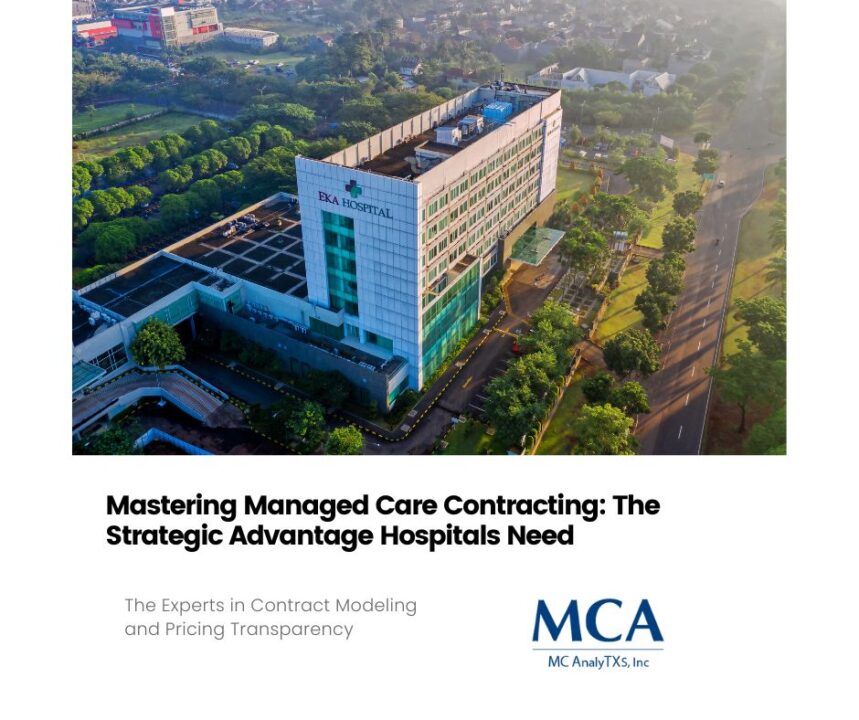
Top Priorities for Healthcare Systems in 2024
November 1, 2023
How Labor Expenses of Hospitals Impact their Financial Performance
November 6, 2023One of the top challenges for revenue cycle management is ensuring transparency in pricing. Patients and stakeholders often face difficulty in understanding the costs associated with healthcare services resulting in confusion and compromised revenue flows. The Centers for Medicare & Medicaid Services (CMS) have taken steps to promote pricing transparency, ultimately leading to positive results for revenue cycle management, revenue cycle directors, and Chief Financial Officers (CFOs). In this blog post, we will explore how CMS is boosting pricing transparency, and how it can impact revenue cycle management in healthcare facilities.
Price Transparency- Why Is It Important?
Price transparency has become one of the key components for healthcare facilities due to the rise in consumerism and expectations of patients and stakeholders. According to the Patient Access and Financial Health Report conducted by TransUnion Healthcare, 60% of patients said they would choose a provider that has price transparency over one that does not. A study conducted by the same entity shows that pricing is one of the main reasons why patients avoid healthcare services. Therefore, boosting price transparency will enable healthcare facilities to attract more potential patients, establish credibility, and increase revenue collection.
Pricing Transparency and CMS
CMS has taken several steps to promote pricing transparency, including the Transparency in Coverage rule, which enforces healthcare plans to reveal prices of their services up-front. The Hospital Price Transparency Rule is also a game-changer as it mandates hospitals to publicly expose the costs of their services, enabling patients and stakeholders to make informed decisions about healthcare services. CMS encourages facilities to promptly deliver Out-of-Network Advanced Explanation of Benefits (EOBs) to patients, which ultimately enhances price transparency and patient satisfaction. Finally, CMS launched the “What’s Covered” application to help users comprehend costs and coverage related to Medicare services.
The Impact of Pricing Transparency on Revenue Cycle Management
Pricing transparency brings several benefits to revenue cycle management, including increased revenue collection, decreased bad debt write-offs, and enhanced collection procedures. Gathered data from price transparency helps improve revenue cycle management through advanced analytics, ultimately improving bottom-line results. Clear communication of costs mitigates patient dissatisfaction and improves the overall patient experience, leading to elevated patient satisfaction scores. Additionally, price transparency boosts trust and credibility among patients and stakeholders, which is crucial for long-term financial stability for healthcare facilities.
Challenges in Implementing Pricing Transparency
While pricing transparency has enormous benefits, challenges can arise when attempting to implement these policies. One of the biggest obstacles is the lack of standardized data, which creates difficulties in the comparison of prices. Additionally, smaller healthcare providers may face trouble with appropriate documentation or risk of errors in pricing disclosure. While establishing price transparency policies, facilities may face increased operational costs; however, the long-term benefits outweigh the short-term extra costs expended.
Conclusion:
The CMS is taking significant steps to ensure pricing transparency in healthcare services, boosting patient satisfaction and enhancing revenue cycle management’s bottom-line results. Pricing transparency brings several advantages to the healthcare industry, including credibility, improved financial stability, and heightened patient satisfaction. However, facilities may face challenges when attempting to implement these policies. Regardless of the difficulties, pricing transparency is an essential step towards a better patient experience and accounting management. Healthcare facilities that improve their pricing transparency process will surely see a positive impact on their revenue collection and financial stability.





